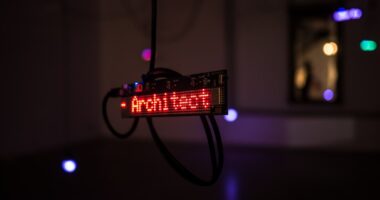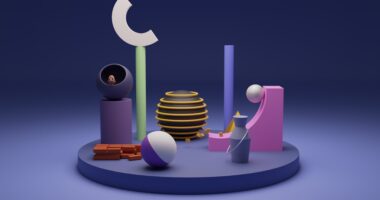KAWS, also known as Brian Donnelly, is a renowned artist who has made a significant impact on the contemporary art world. With a background in graffiti and street art, KAWS has developed a unique style that combines elements of pop culture and cartoon characters with his own distinct aesthetic. His work often features iconic characters such as Mickey Mouse and SpongeBob SquarePants, which he reimagines in his own signature style.
NFTs, or non-fungible tokens, have recently gained immense popularity in the art world. NFTs are unique digital assets that are stored on a blockchain, which is a decentralized digital ledger. Unlike cryptocurrencies such as Bitcoin, which are fungible and can be exchanged for one another, NFTs are one-of-a-kind and cannot be replicated or replaced. This uniqueness is what gives NFTs their value and has made them a popular medium for artists to sell their digital artwork.
Key Takeaways
- KAWS is a renowned artist who has recently entered the world of NFTs.
- Ethereum is a blockchain platform that enables the creation and trading of NFTs.
- Ethereum has been making significant developments in the blockchain world, including the upcoming Ethereum 2.0 upgrade.
- NFTs are becoming increasingly popular in the digital art market, with record-breaking sales and high demand.
- KAWS’ NFTs showcase his unique artistic style and have the potential to revolutionize the art world.
KAWS’ Journey to Digital Art
While KAWS initially gained recognition for his physical artworks, he has recently made a transition to the world of digital art. This shift has allowed him to explore new mediums and experiment with technology in his artistic practice. KAWS has embraced digital tools such as 3D modeling software and virtual reality to create immersive experiences for his audience.
One of the ways KAWS has incorporated technology into his art is through augmented reality (AR). He has created AR sculptures that can be viewed through a smartphone app, allowing viewers to interact with his artwork in a virtual space. This blending of physical and digital elements adds a new dimension to KAWS’ work and pushes the boundaries of traditional art forms.
Understanding Ethereum and Its Role in NFTs
Ethereum is a blockchain-based platform that enables the creation and sale of NFTs. Unlike Bitcoin, which was primarily designed as a digital currency, Ethereum was specifically built to support decentralized applications and smart contracts. Smart contracts are self-executing contracts with the terms of the agreement directly written into code. This technology allows for the creation of NFTs and facilitates the buying, selling, and trading of these digital assets.
Ethereum’s blockchain technology ensures the security and authenticity of NFTs by providing a transparent and immutable record of ownership. Each NFT is assigned a unique token ID, which is stored on the Ethereum blockchain. This token ID serves as proof of ownership and can be verified by anyone with access to the blockchain. This transparency and security have made Ethereum the preferred platform for artists and collectors to engage with NFTs.
Ethereum News: The Latest Developments in the Blockchain World
The world of blockchain technology is constantly evolving, and Ethereum has been at the forefront of many recent developments. One significant development is the introduction of Ethereum 2.0, also known as ETH2 or Serenity. Ethereum 2.0 aims to address some of the scalability issues faced by the current Ethereum network by transitioning from a proof-of-work (PoW) consensus mechanism to a proof-of-stake (PoS) mechanism.
Another important development is the rise of decentralized finance (DeFi) on the Ethereum network. DeFi refers to financial applications built on top of blockchain technology that aim to provide traditional financial services in a decentralized manner. This has opened up new opportunities for artists and collectors to engage with NFTs, as DeFi platforms allow for the creation of new financial instruments and marketplaces.
The Rise of NFTs: An Overview of the Digital Art Market
The NFT market has experienced explosive growth in recent years, with artists and collectors flocking to this new medium. One advantage of NFTs for artists is that they provide a new revenue stream, allowing them to monetize their digital creations in a way that was not possible before. NFTs also offer artists greater control over their work, as they can set royalties and receive a percentage of future sales.
However, there are also some disadvantages to NFTs. One concern is the environmental impact of blockchain technology, as the energy consumption required for mining cryptocurrencies can be significant. Another concern is the potential for fraud and plagiarism, as it can be difficult to verify the authenticity of digital artworks. Despite these challenges, the NFT market continues to grow, and artists like KAWS are finding success in this new digital landscape.
The Artistry of KAWS NFTs: A Deep Dive

KAWS’ NFTs have garnered significant attention in the art world due to their unique artistic value. His digital artworks often feature his iconic characters in surreal and dreamlike settings, creating a sense of nostalgia and wonder. KAWS’ use of color and texture adds depth and dimension to his digital creations, making them visually striking and captivating.
One of the unique features of KAWS’ NFTs is their interactivity. Many of his digital artworks allow viewers to explore different perspectives and angles, creating an immersive experience. This interactivity adds a new layer of engagement to KAWS’ work and blurs the boundaries between the physical and digital realms.
Eth News: How Ethereum is Revolutionizing the Art World
Ethereum’s impact on the art world extends beyond the creation and sale of NFTs. The technology has the potential to revolutionize how art is created, sold, and collected. Smart contracts on the Ethereum network can be used to automate royalty payments for artists, ensuring that they receive a fair share of future sales. This has the potential to disrupt traditional art market practices and empower artists in new ways.
Ethereum also enables fractional ownership of artworks through the creation of digital tokens that represent shares in a physical artwork. This allows collectors to own a fraction of a valuable artwork, making art investment more accessible and inclusive. Additionally, blockchain technology can provide provenance and authenticity for physical artworks, reducing the risk of fraud and forgery in the art market.
Exploring the World of Digital Collectibles: NFT News and Trends
The NFT market is constantly evolving, with new trends and developments emerging regularly. One trend that has gained traction is the use of generative art in NFTs. Generative art is created using algorithms and computer code, allowing for infinite variations and unique combinations. This has opened up new possibilities for artists to create dynamic and ever-changing digital artworks.
Another trend is the integration of NFTs into virtual worlds and metaverses. Virtual worlds such as Decentraland and Cryptovoxels allow users to buy, sell, and display NFTs in a virtual environment. This has created a new market for virtual real estate and virtual goods, with artists and collectors alike exploring the potential of these immersive digital spaces.
KAWS and the Future of NFTs: What’s Next?
KAWS’ influence on the NFT market cannot be overstated. His unique artistic style and innovative use of technology have set a new standard for digital art. As the NFT market continues to evolve, it is likely that KAWS will continue to push the boundaries of what is possible in the digital art space.
One potential area for growth is the integration of NFTs into the gaming industry. With the rise of blockchain-based games and virtual reality experiences, there is a growing demand for unique digital assets that can be bought, sold, and traded. KAWS’ iconic characters and distinctive aesthetic could find a natural fit in this emerging market.
The Impact of KAWS NFTs on the Art World
In conclusion, KAWS’ journey into the world of NFTs has had a significant impact on the art world. His unique artistic style and innovative use of technology have helped to legitimize NFTs as a medium for artists to sell and showcase their digital creations. Ethereum’s blockchain technology has provided the infrastructure for this new digital art market, enabling artists and collectors to engage with NFTs in a secure and transparent manner.
The rise of NFTs has also sparked a broader conversation about the future of art and the role of technology in the creative process. As artists like KAWS continue to push the boundaries of what is possible in the digital art space, it is likely that we will see further innovation and experimentation in the years to come. The potential for growth in the NFT market is immense, and it will be fascinating to see how this new medium continues to evolve and shape the art world.
If you’re interested in exploring the world of digital art and NFTs, you might also enjoy reading the article “Hello World: A Beginner’s Guide to NFTs” from ETH News. This informative piece provides a comprehensive introduction to non-fungible tokens, explaining what they are, how they work, and their impact on the art market. It’s a great resource for anyone looking to dive deeper into the fascinating realm of digital collectibles. Check it out here.
FAQs
What are KAWS NFTs?
KAWS NFTs are digital artworks created by the artist KAWS that are sold as non-fungible tokens (NFTs) on blockchain platforms. These NFTs are unique digital assets that are verified on the blockchain and cannot be replicated or duplicated.
Who is KAWS?
KAWS is a contemporary artist and designer who is known for his pop art-inspired sculptures, paintings, and illustrations. He has collaborated with brands such as Nike, Uniqlo, and Dior, and his work has been exhibited in galleries and museums around the world.
What is digital art?
Digital art is a form of art that is created using digital technology, such as computers, tablets, and software. It can take many forms, including digital paintings, animations, and interactive installations.
What is an NFT?
An NFT, or non-fungible token, is a unique digital asset that is verified on a blockchain. It is used to represent ownership of a specific piece of digital content, such as a piece of art, music, or video.
How do KAWS NFTs work?
KAWS NFTs are sold on blockchain platforms such as Nifty Gateway and OpenSea. Each NFT represents a unique digital artwork created by KAWS, and the ownership of the NFT is verified on the blockchain. The NFT can be bought and sold on the platform, and the owner has the right to display the artwork in digital galleries or other virtual spaces.
Why are KAWS NFTs valuable?
KAWS NFTs are valuable because they are unique digital assets that are verified on the blockchain. They are also created by a well-known artist with a large following, which adds to their value. Additionally, the scarcity of the NFTs and the demand for KAWS artwork contribute to their value.





